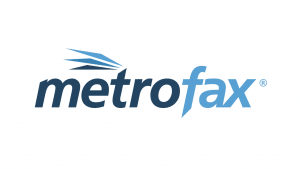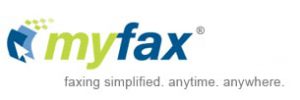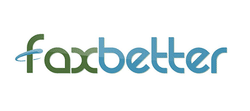Who still uses fax machines?
Not many people actually use a real fax machine, but plenty of businesses still rely on fax messages. The majority of faxes today are sent in a handful of fields, such as:
- Healthcare
- Legal firms
- Pharmaceuticals
- The government
That’s not to say that only doctors, lawyers, and bureaucrats fax pages and pages of documents to each other. Believe it or not, a 2017 poll by Spiceworks revealed that 89% of small to medium businesses still send a number of faxes a year for one reason or another. The answer to “Who still uses faxes?” is “Pretty much everyone”.
Why use faxes?
It seems like faxes are pretty similar to emails; possibly similar enough that they are redundant. That’s not quite the case, though. There are some very specific use cases in which the benefits of a fax far outweigh those of an email.
The comparison of faxes isn’t just between email and fax, either. There are plenty of physical fax machines still in operation that may be outclassed by a robust online fax service.
While fax usage and the reasons for doing so vary between individuals and companies, here are some of the common reasons:
Fax is more secure than email.
This is the biggest reason for the continued existence of the fax. Unlike emails, most of which are not secure, fax is intrinsically private since it travels through phone lines. Online fax services universally maintain this standard by having at least 128-bit encryption. This is vital for businesses that handle sensitive information for customers.
Online fax services are way cheaper than traditional fax machines.
You don’t have to buy paper, you don’t have to buy toner, and you definitely don’t have to buy those monstrous hunks of plastic they call a fax machine. Most importantly, no fax machine means there’s no need for a landline – removing that cost alone will pay for an online fax service itself.
Faxes through mobile offer unparalleled convenience.
Just as you can email with your phone, you can send and receive faxes on a smartphone. That’s especially helpful for small business owners or employees who find themselves out in the field or otherwise out of the office during the normal workday.
Online faxes save storage space.
Not just on the desk, either. Despite being thin, paper takes up a lot of space. No need to keep around copies of old contracts or forms in an ugly file cabinet when all of those same documents can be stored on the cloud and pulled up at a moment’s notice. Some online fax services offer built-in storage, but your hard drive or a cloud storage tool like Google Drive works just as well.
Online faxes are environmentally friendly.
Traditional fax machines use around 200 billion pieces of paper each year. That’s equivalent to about 20 million trees. Online faxes kill zero trees and reduce the amount of plastic entering the waste stream through toner cartridges and old machines.
Metrofax
MetroFax is an overall winner that will appeal to almost everyone. It’s incredibly cheap for the enormous page count offered and has a lot of great features that you would expect from a top-of-the-line online fax service. The aesthetic of their interface is somewhat dated, but it’s very functional. Their mobile app is also a bit ugly, but a very strong entry on the (short) list of mobile apps for iOS and Android available in the industry. It’s not very customizable, though. You can’t, for example, change how and when you are notified of incoming faxes. You also can’t customize your cover sheet, which may be a deal-breaker for some.
RingCentral
RingCentral is a very capable and powerful fax software with a few key flaws.
First and foremost, it’s expensive. That’s especially unusual considering that it is merely a subsidiary service of a larger communications suite. One would expect that it would be a cheap standalone, not priced higher than their competitors who are fax-only. However, RingCentral’s premium plan comes with a lofty monthly fee of $34.99, though that does include a toll-free number and unlimited outgoing faxes.
RingCentral Fax makes few adjustments for their fax-only customers, and the presence of locked features (like voice calls) in the interface is annoying and distracting, making you feel like you’re in the free-to-play version… despite having paid a lot.
Ooma Office
Ooma Office is one of the most affordable solutions on the market today. To get set up, you simply have to buy the Ooma hub and then plug it into a modem. After that, you can enjoy faxing and many basic features like voicemail, call forwarding, call recording, caller ID, and more.
Ooma has been around for many years, and users report exceptional service stability which is essential if you plan to use this for your main business line. You can even port in your existing phone number so that you don’t experience any missed calls as a result of switching. Ooma falls behind some of the competition with its lack of advanced features. However, for basic fax service, Ooma’s checks off all the boxes.
MyFax
MyFax has a good complement of features, but it’s plagued with poor policies. They offer international faxing to over 50 countries if you are willing to pay the price.
MyFax differentiates between sent and received pages, allotting a specific amount of each type every month. That’s a big no-no in an era where combined pages are more common and more sensical.
Furthermore, the page counts are on the low side for their price point… and you are given twice as many received pages as sent. Few companies receive twice as many faxes as they send, making this service mostly useless.
eFax
eFax has the distinct honor of being the only fax service that charges a setup fee (and for no real reason). That sort of sets the tone for the rest of the service too: pretty expensive with no real benefit.
It’s got all of the features we have come to expect from fax software, but nothing extraordinary. It can handle slightly larger files than normal and has a half-decent archive search function, but those are the only real positives. Even the app for mobile devices is pretty bad.
While eFax is functional, the simple fact of the matter is that it’s way more expensive than it has any right to be and there are many better options.
Nextiva vFAX
While this fax service, like RingCentral, is part of a larger communications package, Nextiva vFax pulls it off with a little more grace. There are still annoying reminders that you’re just using a part of a greater service, but the great price value compensates for it.
Nextiva vFax has one of the best price-per-page ratios in the industry, which is quite the opposite of RingCentral. It also has almost every feature you would expect. It has two issues, however: poor security and no ability to support multiple users.
HelloFax
HelloFax is touted as the best online fax service on the web. While it’s not quite so cut-and-dry as that, there’s no doubt that it’s among the best.
It certainly has the best web interface – and in an industry where most of the services look and feel like they’re remnants of the early 2000s, that’s no small benefit. HelloFax does not offer toll-free fax numbers, nor is it as customizable as some of the other ones, so if you’re tech-savvy and picky HelloFax might not be your cup of tea. For the average user, however, it will feel comfortable and intuitive.
SRFax
SRFax is one of the better fax solutions available. The service offers a fair and balanced free service plan and the ability to get your feet wet in faxing for just $3 a month. If you’re comfortable with it, there are many more plans to choose from that scale with you as your business grows. Plans also come with more than just a page count increase, some adding valuable extra features.
It’s also one of the best fax services for those who need to support multiple users. It’s very versatile in the number of file formats it can support and even has a unique print-to-fax option.
Sfax
Sfax is very, very good at what it does: be the online fax service of choice for the healthcare industry.
We had to dock a star solely because it was absurdly expensive. It doesn’t offer many features beyond those of what other top-tier fax services do; it’s priced up just because of its target audience.
And that’s okay. It’s quite an excellent fax software and is designed to be HIPAA-compliant and BAA-friendly. It also includes fax auditing and tracking faxes all the way back to the originals if a “paper” trail is necessary.
It has an API available and a unique ability to download faxes securely and directly to your computer.
GotFreeFax
GotFreeFax is a bit of a one-trick pony. It offers free fax services, obviously, but also branches out into paid plans which offer very little to compete with better-priced services that actually have features (as this one is literally just a webpage with a submission form).
For those who need to send only the occasional fax, GotFreeFax is probably more than sufficient. It’s also the only service that allows for a prepaid plan instead of a monthly subscription, which some might find appealing.
Send2Fax
Send2Fax isn’t a bad fax service, it’s just extremely dated.
It lacks some of the nice quality-of-life features found in high-end competitor online services. It has all of the necessary components of a full-fledged fax service… as it was envisioned in 1998. The user interface will be either nostalgic or horrendous, depending on how fondly you remember the days of dial-up.
Confusingly, Send2Fax is owned by the same parent company as MyFax and eFax: j2Global. Why any company would own several competing online fax companies is anyone’s guess. Unless you have a specific reason for wanting archaic software (such as a large proportion of older employees) you should probably pass on Send2Fax.
FaxBetter
It ought to be called FaxWorse.
FaxBetter is riddled with half-truths, scummy policies, and a few outright lies. It’s software that preys on the computer illiterate and has barely any redeeming qualities.
The one thing that can be said for FaxBetter is that it can be fairly cheap. That’s assuming you want a barebones experience with few features or add-ons. Pricing specifics are obscured until you commit to paying or are funneled in through the trap that is a “free account”, designed to get you to subscribe, or else you’ll lose all your stored faxes and your fax number.
How is fax different from email?
These days, the difference between fax and email isn’t very significant.
Traditional fax machines worked thusly: The sender has a paper document of whatever content (text, images, etc.). The sender punches in the phone number of the receiving fax machine, scans the document, and off it goes. The information is transmitted through telephone lines (those archaic landlines). The receiving fax machine automatically prints a document identical to the one sent.
Email is a pretty similar process. The sender composes an email by typing it directly into their electronic mail service provider and includes links, GIFs of cats, and other attachments as necessary. The email is sent through the internet and received in the recipient’s inbox almost instantly.
There are three primary differences between fax and email.
- Fax only sends documents. Anything that can be printed on paper can be sent via fax, but that’s it. Letters, forms, official documents, and images are all fair game. Obviously, sending a video or a link to a website is an action beyond the capability of a fax machine. Not an online fax service – online faxes can send all the same file types as email can.
- Fax machines use telephone lines. Many businesses keep a telephone line around for the sole purpose of sending faxes since there is little advantage in having a landline over a cell phone nowadays. However, online faxing services DO use the internet to send faxes.
- Faxes are lossy. That means that repeated sends of the same document will result in resolution loss. The reason for the loss is that the scans aren’t perfect, naturally, and those errors accumulate every time it’s scanned. Veteran faxers will remember that the funniest images also had the worst quality since they were resent so many times.
Internet faxes may be lossy depending on whether or not a physical fax machine is involved in the process. If the document is just sent between two online fax services, no loss in resolution will occur.












